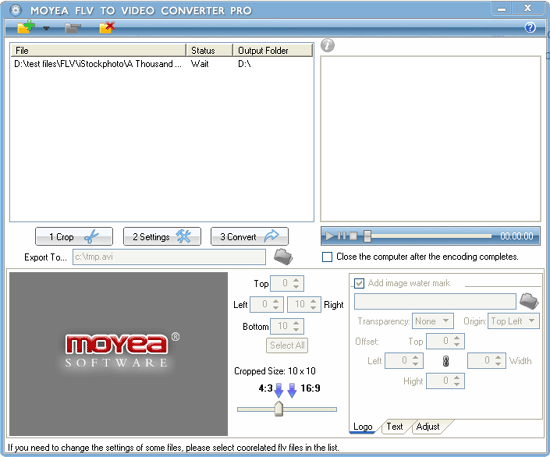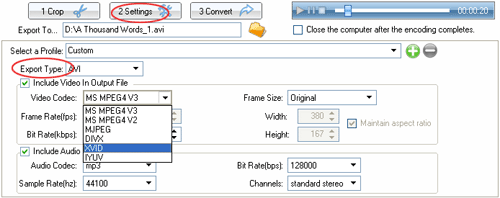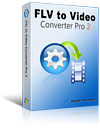FLV to AVI: How to convert flv (flash video) to avi for playing on windows media player or editing in windows movie maker
What is AVI?
Defined by Microsoft, AVI stands for Audio Video Interleave. It is a special case of the RIFF (Resource Interchange File Format). AVI is the most common format for audio and video data on the PC, and it is most suitable for editing.
AVI is Microsoft's response to Apple's QuickTime technology. Early AVI files were limited on choice of video and audio codecs, quality, and resolution. However, with the introduction of DirectShow, AVI became a very flexible and powerful architecture. Some new codecs, such as DivX and XviD enable AVI files to have similar or even better quality than DVD.
For further processing and editing, we need frequently convert the FLV files downloaded from the Internet to AVI files for local application. Moyea FLV to Video Converter Pro is a fine choice to convert FLV files to AVI, and besides conversion, it provides the function to edit the created AVI files.
1. Download and launch Moyea FLV to Video Converter Pro
In order to finish this guide, please install the Moyea program of FLV conversion.

2. Add File
Click on "Add" icon in the tool bar to import target FLV file into the program. Moyea FLV to Video Converter Pro support all kinds of FLV files without the need to install extra codecs; and the FLV files it supports include flash 8 video video FLV, H263 video FLV, NellyMoser audio FLV, etc.
3. Adjust the Audio and Video Settings

Select "AVI" in the pull-down menu of "Export Type" as the format of the output video file.
In the panel of "Include Video in Output File", you can change the video settings: video codec, frame rate, resolution (frame size), etc.
The size of the AVI file depends a lot on the chosen video codec. The old codecs shipped with Windows, such as MJPEG, Microsoft Video 1, etc, are not very efficient. You can use additional codecs from Microsoft or third party codecs to reduce the file size. DivX and XviD are two fine third party codecs, which produces video with excellent quality with smaller file size. Both of them are based on MPEG-4, and both can be used with the AVI file format.
However, if you use any non-standard codecs from the AVI file, please keep in mind that the viewer of the created video must have the codecs installed on their PC, too, and your file may not be compatible with all video editing software.
In the panel of "Include Audio in Output File", you can change the video settings: the audio codec, etc. Depending on the codecs, you may also change the sample rate, channel, frame size and bit rate.
If you choose "mp3" as the audio codec, you may encounter some problems. The MP3 compressor does not work correctly in video files and often causes the conversion to abort in the middle. And we suggest that it's better not to use this one.
4. Select the Output Directory and Convert
When you have completed the settings, you can go on to select an output directory by clicking on the browser icon. And then click on "Convert" in the tool bar.
Follow the screen instructions and you can get the desired AVI files.
>> How to convert Flash to AVI with alpha channel for further use?
